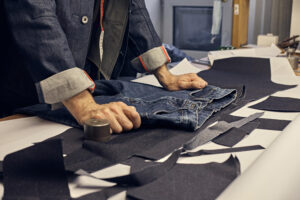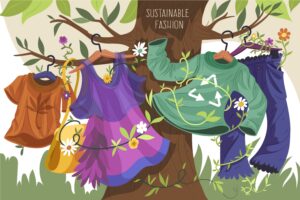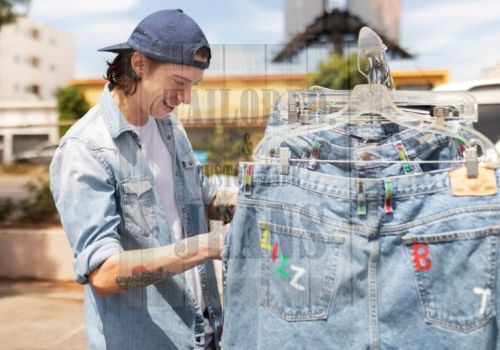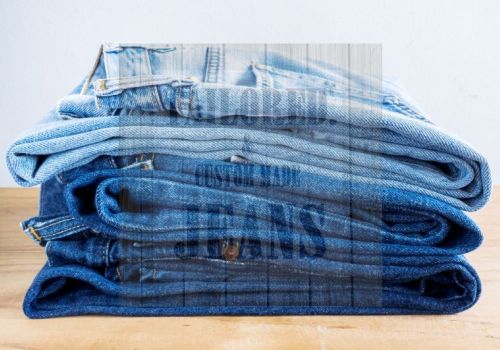Everything About Denim and Jeans Part 5 : Sustainable Denim: Navigating Eco-Friendly Options
- Home
- Blog
- DENIM SERIES
- Everything About Denim and Jeans Part 5 : Sustainable Denim: Navigating Eco-Friendly Options
Denim, a fabric born out of utility and endurance, has evolved through the decades to become an enduring symbol of style and culture. In an era of heightened environmental awareness, the denim industry is evolving to address sustainability concerns. From organic cotton to innovative recycling methods, this blog explores the journey toward creating eco-friendly denim while balancing style and responsibility.
Introduction As global concerns about the environment intensify, industries are embracing sustainable practices, and the denim world is no exception. In this blog, we’ll dive into the sustainable denim movement, exploring how conscious choices in production and design are shaping the future of this iconic fabric.
The Environmental Impact of Traditional Denim Production The traditional denim manufacturing process is associated with high water consumption, chemical usage, and excessive waste. From cotton cultivation to dyeing and finishing, each stage contributes to the industry’s environmental footprint.
Organic Cotton: A Greener Alternative One significant step toward sustainability is the adoption of organic cotton. Grown without synthetic pesticides or fertilizers, organic cotton reduces the impact on soil, water, and air. Brands embracing organic cotton are not only reducing their carbon footprint but also supporting healthier ecosystems and communities.

Low-Impact Dyeing Techniques Dyeing processes have historically been resource-intensive, but advancements in technology are driving the adoption of low-impact dyeing methods. From waterless dyeing to the use of plant-based dyes, these techniques minimize the consumption of water and chemicals while producing vibrant hues.
Recycling and Upcycling: Closing the Loop Recycling plays a crucial role in denim’s journey toward sustainability. Brands are exploring ways to recycle denim scraps and old jeans, transforming them into new textiles. Upcycling, which repurposes denim garments into new creations, breathes new life into discarded items while reducing the demand for virgin resources.

Innovative Techniques: From Laser Finishing to Waterless Production Technology is driving innovation in denim manufacturing. Laser finishing, for instance, allows designers to achieve distressed looks without harmful chemical treatments. Waterless production methods, such as air dyeing, drastically reduce water usage in the dyeing process.
Transparency and Circular Fashion The sustainable denim movement is marked by transparency in supply chains. Brands are adopting traceable sourcing practices, ensuring that every step of the production process aligns with ethical and environmental standards. Circular fashion initiatives, such as take-back programs and resale platforms, extend the lifespan of denim garments.

The Consumer’s Role: Making Informed Choices As consumers become more conscious of their environmental impact, their choices shape the demand for sustainable denim. By supporting brands committed to responsible practices and making mindful purchasing decisions, consumers contribute to the growth of the sustainable denim movement.
Conclusion Sustainable denim represents a harmonious intersection of style, responsibility, and innovation. By embracing organic materials, adopting low-impact techniques, and embracing recycling, the denim industry is demonstrating its commitment to a more eco-friendly future. As we delve deeper into the world of custom-made jeans, we’ll explore how personalized craftsmanship can be aligned with sustainable practices, resulting in jeans that are both tailored and responsible.
Unlocking the Advantages of Buying Custom Jeans Online: Tailored Jeans for a Personalized Wardrobe
Which jeans you should wear to get a perfect shape?
Your Denim Weight Does Matter — Here’s Why It Impacts Comfort, Fit, and Durability
Tailored Denim: Why Investing in Custom Jeans Is Worth It
ABOUT US
We are the global standard in custom-fit denim, meticulously crafted for unparalleled comfort and style. With decades of expertise, our commitment to precision tailoring and sustainable practices ensures every pair reflects our dedication to quality and your unique fit. Discover the perfect jeans, Making & Delivering Custom Jeans in USA and worldwide.
Tailored-Jeans.com: Crafting exceptional denim since 1996 in United States with an unwavering commitment to fit and quality. Discover our legacy.




